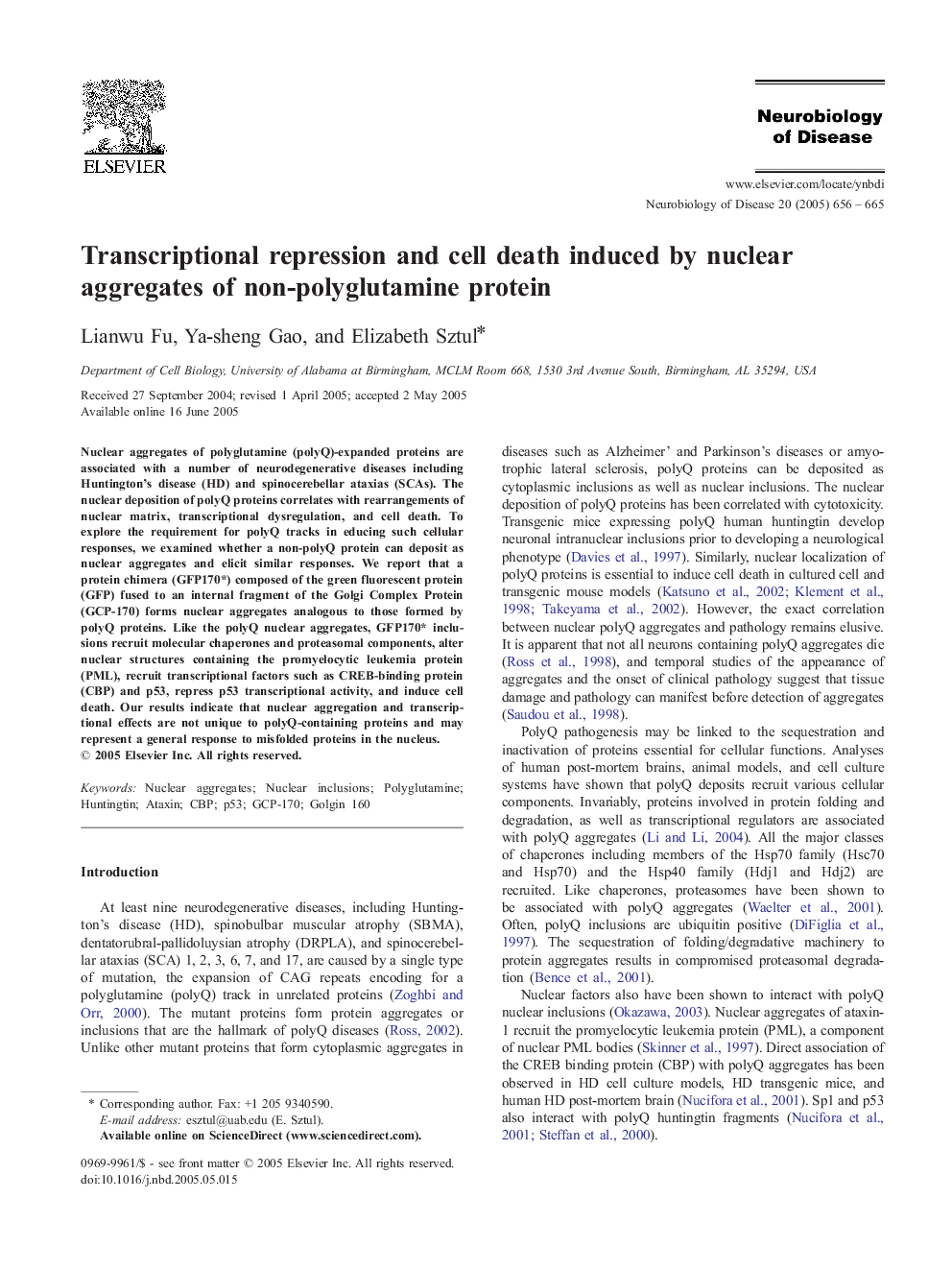| Article ID | Journal | Published Year | Pages | File Type |
|---|---|---|---|---|
| 9989542 | Neurobiology of Disease | 2005 | 10 Pages |
Abstract
Nuclear aggregates of polyglutamine (polyQ)-expanded proteins are associated with a number of neurodegenerative diseases including Huntington's disease (HD) and spinocerebellar ataxias (SCAs). The nuclear deposition of polyQ proteins correlates with rearrangements of nuclear matrix, transcriptional dysregulation, and cell death. To explore the requirement for polyQ tracks in educing such cellular responses, we examined whether a non-polyQ protein can deposit as nuclear aggregates and elicit similar responses. We report that a protein chimera (GFP170*) composed of the green fluorescent protein (GFP) fused to an internal fragment of the Golgi Complex Protein (GCP-170) forms nuclear aggregates analogous to those formed by polyQ proteins. Like the polyQ nuclear aggregates, GFP170* inclusions recruit molecular chaperones and proteasomal components, alter nuclear structures containing the promyelocytic leukemia protein (PML), recruit transcriptional factors such as CREB-binding protein (CBP) and p53, repress p53 transcriptional activity, and induce cell death. Our results indicate that nuclear aggregation and transcriptional effects are not unique to polyQ-containing proteins and may represent a general response to misfolded proteins in the nucleus.
Related Topics
Life Sciences
Neuroscience
Neurology
Authors
Lianwu Fu, Ya-sheng Gao, Elizabeth Sztul,
